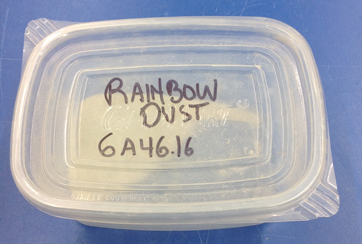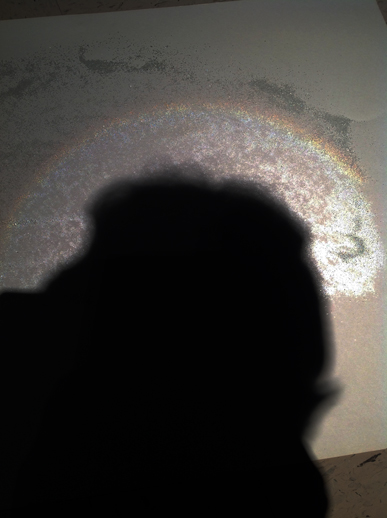|
Size: 2429
Comment:
|
← Revision 8 as of 2016-06-14 23:32:53 ⇥
Size: 2495
Comment:
|
| Deletions are marked like this. | Additions are marked like this. |
| Line 38: | Line 38: |
| {{attachment:Halo.jpg||font-size="1em"}} | {{attachment:Halo.jpg}} |
| Line 50: | Line 50: |
| However, clouds are made of more or less spherical droplets of water. Why do we not see a rainbow every time there is a cloud? | Both the water droplets that make rainbows and the water droplets that make up clouds are spherical, and both are "many" times larger than the wavelength of visible light. |
| Line 52: | Line 52: |
| The answer turns out to be that there is a significant difference between the scattering of light by drops of about 300 | Why do we not see a rainbow every time there is a cloud? |
| Line 61: | Line 61: |
| * From the physicist's point of view: http://hyperphysics.phy-astr.gsu.edu/hbase/atmos/blusky.html |
Rainbow Dust, 6A46.16
Topic and Concept:
Geometrical Optics, 6A46. Rainbow
Location:
Cabinet: Optics (OP)
Bay: (A2)
Shelf: #1

Abstract:
A sample of glass (or possibly polymeric) spheres collected from University Ave. outside Chamberlin Hall following the painting of the crosswalks. Typical sphere diameter 400 microns.
Equipment |
Location |
ID Number |
|
|
|
Rainbow Dust |
|
Setup and Procedure:
Darken room except for single spotlight.
Place large sheet of white paper below spotlight, empty spheres on paper, and spread them out so that paper is more or less evenly covered.
Stand so that shadow of head falls in center of paper.
Observe colored halo surrounding head.

Discussion:
Small spheres are excellent retroreflectors--that's why transportation engineers embed them in paint used to mark roads.
The exact size of "small" depends on the index of refraction.
This is an example of Mie scattering.
One way to motivate an interest in Mie scattering (which is an advanced topic): when sunlight illuminates falling spherical raindrops, the result is a rainbow.
Both the water droplets that make rainbows and the water droplets that make up clouds are spherical, and both are "many" times larger than the wavelength of visible light.
Why do we not see a rainbow every time there is a cloud?
Videos:
References:
From the transportation engineer's point of view: http://www.dot.state.fl.us/construction/Engineers/MOT/Presents/PavementMarkingTraining.pdf
From the physicist's point of view: http://hyperphysics.phy-astr.gsu.edu/hbase/atmos/blusky.html